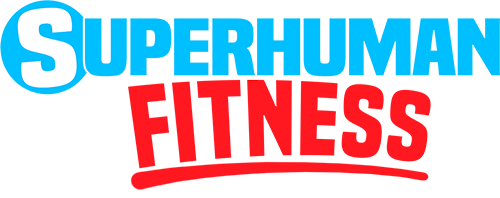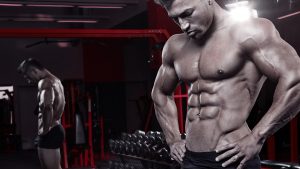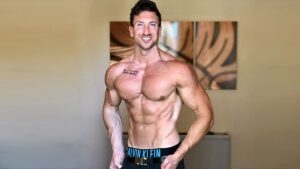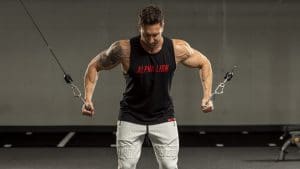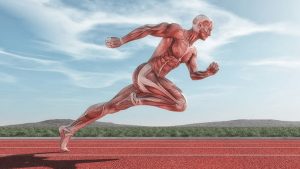Picture your ideal body. Whether you're a guy or a girl, I'm betting that it involves a lean body that is muscular, defined, and possesses rippling abs. This, after all, is the type of body that humans have idealized since the time that the Greek sculptors of the 2nd century BCE created their marble representations.
Rather than bulky muscle, most people want the streamlined, athletic lean body look that was epitomized in the 1950s by Steve Reeves, in the 70s and 80s by Frank Zane, and today by any competitor in the Physique Olympia. In this article, I may not quite get you onto the Olympia stage, but I can promise to reveal a half dozen ways to transform your body into a lean, fit, sculpted muscle machine.
What is Lean Muscle?
Lean muscle, lean body weight, or lean mass has become one of those catchphrases in gym circles over the last few years. People talk about their desire to add lean body mass rather than bulky muscle. Like many things in the gym world, this is a senseless combination of words. The reality is that there is no such thing as lean muscle. There is muscle and then there is fat.
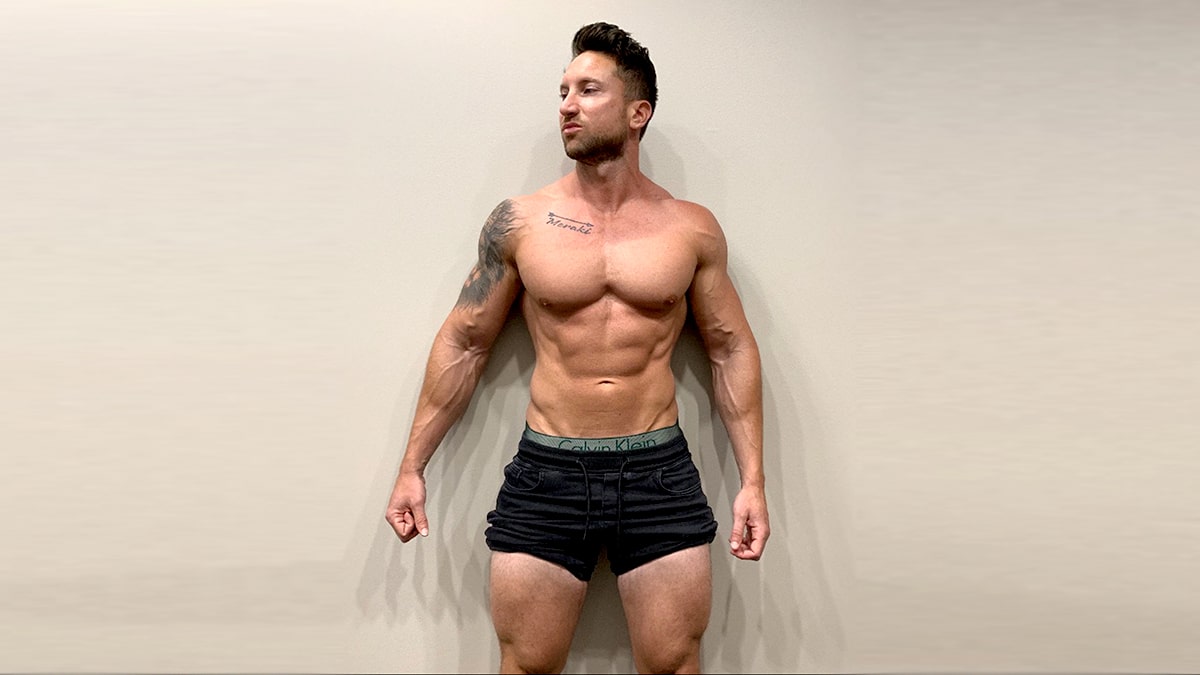
In order to develop the defined, fat-free, athletic muscular lean body look that is sought after nowadays you have to work at developing one and reducing the other.
By definition, muscle is lean. That is because it does not contain fat. However, it is extremely possible to have stored body fat sitting between your muscle and your skin. The less of this you have, the more defined your muscles will be.
Lean Muscle vs Lean Body Mass
Most people use terms such as lean muscle, lean body mass and lean mass interchangeably. However, there is an important distinction here that we need to clarify before we delve into the details of how to achieve real, lasting lean body gains. Lean Body Mass, or LBM, is your total weight minus your fat mass. That, though, leaves you with far more than just muscle. Your Lean Body Mass is an accumulation of your skeletal muscle and your:
Of these 5 things, three of them are pretty unchangeable. The two that are likely to fluctuate are muscle and water weight. When it comes to muscle we can get a little more specific. There are actually 3 types of muscle:
- 1Cardiac
- 2Smooth
- 3Skeletal
Of the 3 types of muscle, skeletal muscle is the only type that has the potential for growth. So, when we talk about gaining muscle, what we are actually talking about is increasing skeletal muscle.
The key point here is that an increase in lean body mass does not automatically mean an increase in muscle. Water makes up more of your lean body mass than you might think. In fact it makes up around 70% of the lean body mass of most people. Your water weight can fluctuate quite a lot throughout the day. Of course, there is also a lot of water contained in muscle. Working out with weights will increase this water content, which is known as intracellular water.
From what we've discussed so far, it should be obvious that simply stepping on a scale will not tell you very much at all about how much muscle you have put on. The only real way to find out is to have a body composition analysis. This can be done with skinfold calipers, hydrostatic testing or Dual Energy X-Ray Absorptiometry (DXA).
Now that we got that out of the way, let's move on to the 6 pillars to lean mass construction!
Pillar #1: Optimize Nutrition
Nutrition is undoubtedly the most important single factor in your lean body transformation success. I have broken the confusing subject of nutrition down to the following 6 key nutrition and dietary habits that you must follow to achieve success:
- 1Eat every 2-4 hours
- 2Eat complete, lean protein at every meal, aiming to get 1.25 grams of protein per pound of bodyweight
- 3Eat vegetables at every meal for vitamins and minerals
- 4Control your carb intake
- 5Eat healthy fats daily
- 6Drink 2 liters (1/2 gallon) water daily
Focus on these nutrition habits every day and you will be fueling your body for maximum fat loss, muscle gain, and abundant training energy while also optimizing your overall health care.
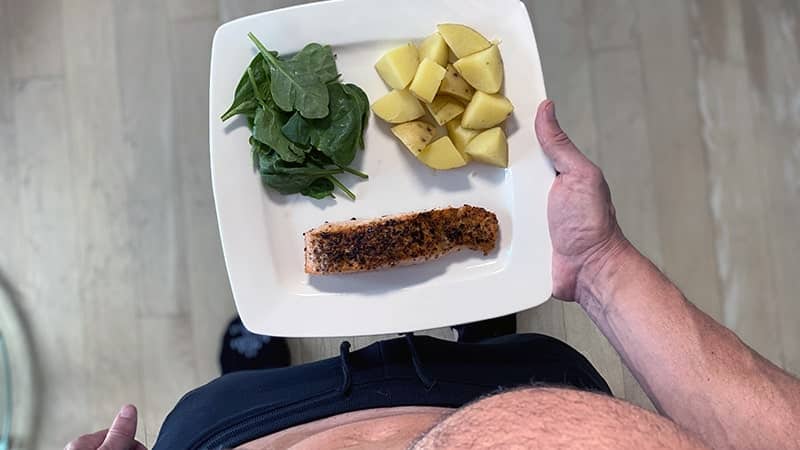
When you work out in the gym you are not building your body up; you’re actually breaking it down. How, or if, you build it back up depends on the nutrition that goes into your mouth before and after your workout. It’s a little ironic, then, that the majority of people trying to build muscle spend so much time on getting their training right and so little time controlling their nutrition.
You see, it doesn’t matter how hard you train, unless you create a caloric surplus through nutrition, you will not build a lean body. So, how do you figure out how many calories you need? The simplest way is to use the Superhuman Calorie Calculator - it's free, laser accurate, and gives you the answer in less than 60 seconds!
Spacing the Calories Out
To benefit maximally from the calories you are eating, you should divide your nutrition into six evenly sized meals, spaced about 3 hours apart. The macronutrient make-up of each meal should be 50% carbohydrates, 30% protein and 20% healthy fats. You should aim for 1.25 grams of protein per pound of bodyweight.
These are the best protein sources to include as part of your mass gain nutrition:
I recommend consuming generous servings of these starchy and fibrous carbohydrates:
Pillar #2: Metabolic Overdrive
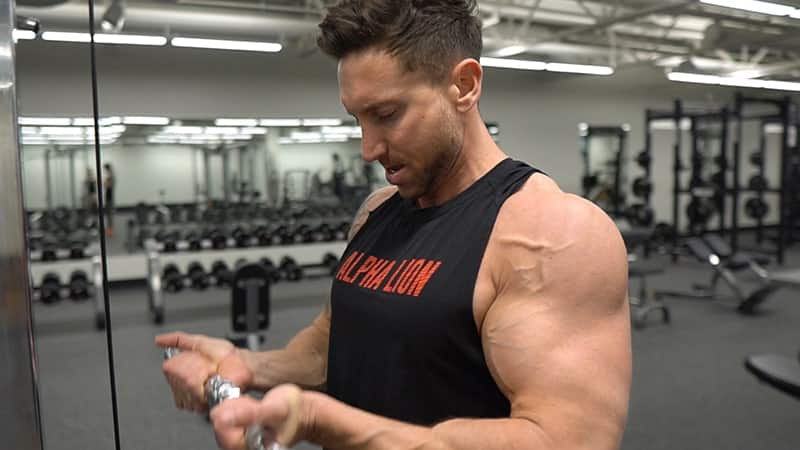
The faster your metabolism, the less likely you are to store body fat. Here are 4 key strategies that I have developed over the years to get and stay super lean. Coupled with the nutritional strategies you are about to learn from the other pillars of lean body transformations, they will get you to your goals even faster.
- 1Build muscle – A pound of muscle burns 50 calories per day, so if you added 10 pounds of lean mass to your frame you'd be burning an extra 500 calories per day!
- 2Train intensely – The harder you exercise, the more you will bring on the ‘after burn’ effect, which keeps your metabolism revved up after your workout is over. The three key variables in workout intensity are load, rest, and speed.
- 3Drink plenty of water – Aim for 2 liters per day. Studies show that it will boost your metabolism by 10-120%!
- 4Take an Omega 3 Fatty Acid Supplement – This balances blood sugar and reduces inflammation, which regulates your metabolism.
Pillar #3: Mental Intensity
One of my early heroes was the great Muhammad Ali. One day a reporter asked Ali how many push-ups he could do. Ali’s answer underwhelmed him..
"About eight or nine."
“What! Just eight or nine?” the reporter replied.
Ali’s answer: “I only start counting when I can’t do any more.”
Ali knew that fatigue and exhaustion are the point where losers stop. He also knew that fatigue and exhaustion are barriers – they are not stopping points. However, that is the point where 99% of people do stop. For the greatest athlete of the 20th century, however, they were the starting point.
Maybe, there’s a lesson in there for us.
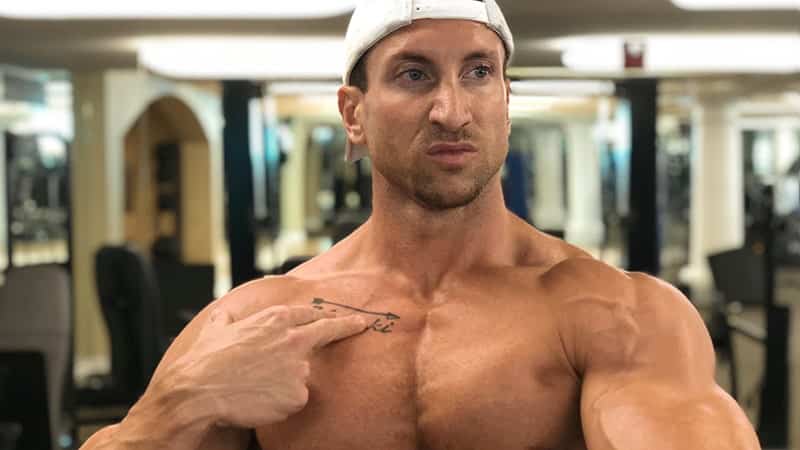
When you walk into the gym, see yourself as a warrior. Zone in on your workout so that your mind is transfixed on what you are going to accomplish.
Break down your training into sets and reps and focus exclusively on what you need to accomplish on that next set. Nothing else matters.
Be in the moment. Make the mind-muscle connection. Don’t be like most people whose minds are wandering while they are training – even while they are in the middle of their set. By being in the moment, you are teaching yourself to stay present, focused, and active. This will allow you to push beyond your physical barriers – and into the zone that actually builds a lean body.
Pillar #4: Burst Cardio/Weight Training
Getting lean requires a combination of the nutritional strategies that we've already covered and calorie-burning exercise. So, what should that type of exercise look like?
A lot of people seem to think that the way to a lean, fat-free physique is to spend endless amounts of time walking on a treadmill. Just walk into any gym and you'll see them packed in like sardines in the cardio area, marching like robots as they stare blankly at rows of TV screens.
These people are not going to get the results they want.
The reason is simple; their type of slow and steady cardio is not intense enough to produce the caloric burn that is needed to get rid of that store of body fat. So, what is it?
High Intensity Interval Training, or HIIT.
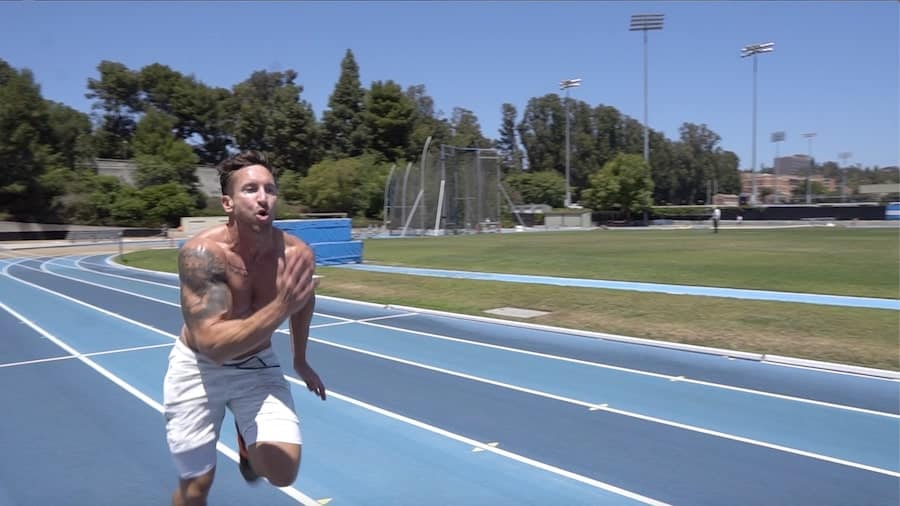
You've probably heard of it. HIIT has been around for a couple of decades now and has steadily gained in popularity on the back of the incredible results it can produce in terms of fat loss. Besides churning through a lot of calories while you are working out, the real power of HIIT is that it induces what is known as the enhanced post exercise oxygen consumption (EPOC) effect.
This causes you to burn more calories after your workout in order to normalize your oxygen levels. This can last for up to 48 hours. That means that you'll still be burning calories from your early morning HIIT session while you're watching Netflix that night!
Another cool benefit of HIIT training is that it is a lot less time-intensive than traditional steady-state cardio. A good example are HIIT sprints as opposed to running on a treadmill for hours.
To achieve the lean muscular look that we are after, we are going to use a variation of HIIT weight training known as burst training. This involves relatively short workouts of around 20 minutes where you do 3 exercises one after the other with no rest for repeat rounds. For some of the workouts, exercises are timed instead of performing a given number of reps.
Boost training is built upon functional compound exercises like squats and deadlifts. I’ve selected these moves because they will build functional strength and lean muscle, while burning calories and promoting the release of fat burning hormones faster than isolation moves like barbell curls.
How to Know If You Are Training at the Right Intensity
If that sounds like hard work, you’re beginning to get the right idea. Burst training is concentrated exercise at high intensity. And it’s all about quality over quantity. That’s why you must always emphasize good technique and form.
Burst Training Workouts
I recommend doing 3 burst training workouts per week. These will be in addition to the resistance training that we'll cover in the next pillar. These workouts will take just 20 minutes and should be done on your off days from your main workouts. So, if your resistance workouts are done on Monday, Wednesday and Friday, do your burst training on Tuesday, Thursday, and Saturday.
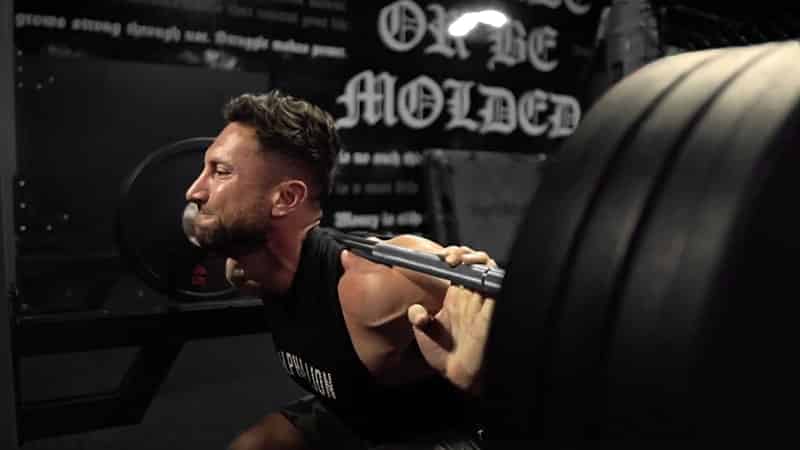
Here are three burst training workouts to be alternated through over the course of your three weekly burst sessions. Begin by placing a stopwatch nearby and setting it to start before your first exercise. Each exercise is performed for 20 reps (except for pull-ups, where you do 5 reps per set) and you perform the exercises in circuit fashion with no rest between them.
After completing a 'round' you get exactly 60 seconds to rest before starting on the next round. Keep going until your stopwatch tells you that 20 minutes have expired - then collapse on the ground in a pool of sweat!
Make sure that you maintain proper form on each exercise - don't allow your desire to beat your previous number of rounds to compromise your exercise execution.
Burst Workout #1
Burst Workout #2
Burst Workout #3
Pillar #5: Resistance Exercise Selection
Pumping iron is the key to transforming your body. It places you in the role of a sculptor, chiseling away to reveal the physique that you see in your mind’s eye.
Weight training is a tool that can be manipulated to achieve the results that you are after. Our goal is to get you as lean as possible while creating maximum strength along with the foundation of the classic physique look – wide shoulders, narrow waist, chiseled pecs, and flaring quads. However, that will only happen if you are training the right way.
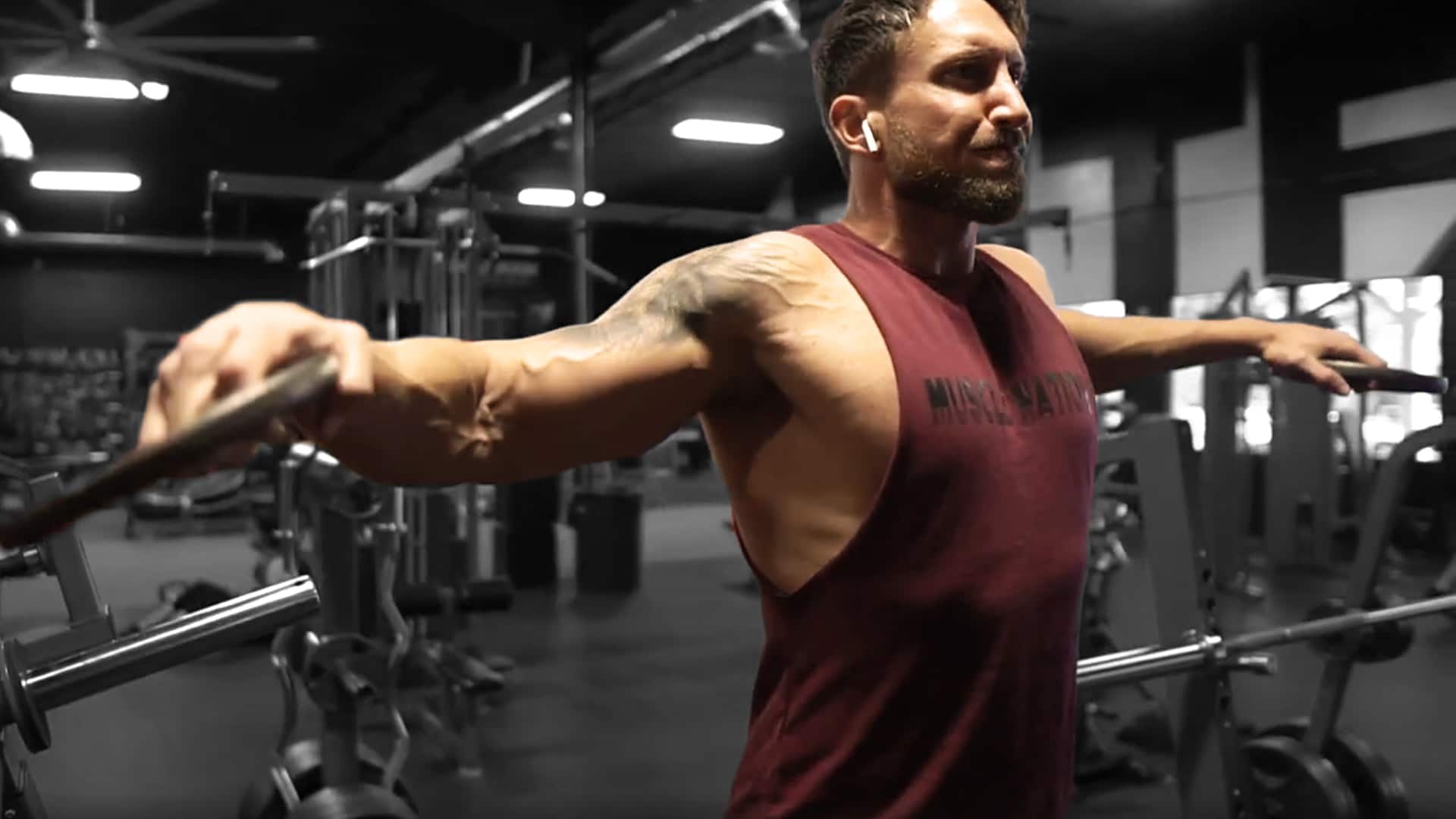
The reality of resistance training to achieve a lean body is that many of the exercises that are considered to be the best ones to build muscle for each body part are not actually very effective at all. In fact, the most commonly performed exercises that are being done in gyms all over the planet to develop the quads, chest, and back muscles, to name a few, would only rate as 4 or 5 out of 10 in terms of effectiveness.
In order to succeed at creating the lean body that you're after you need to use your brain to actually analyze the effectiveness of the exercises that you're doing rather than blindly following what everyone else is doing. There are ways to do that based on objective biomechanical science rather than subjective Broscience.
Here are 9 key criteria that an effective muscle building exercise MUST comply with:
- 1It must allow the operating lever of the muscle (i.e. the upper arm, or humerus, in the chest press) toward the origin of the muscle fibers.
- 2It must involve dynamic (chest press) as opposed to isometric (plank) movement.
- 3It must allow for full range of motion through the muscles natural movement arc (the middle 80 percent of range of motion is the ideal sweet spot).
- 4The direction of the resistance must align with the anatomical direction of motion of the target muscle.
- 5It must allow the target muscle to be positioned directly opposite to the direction of the resistance.
- 6It must not cause the shutting down of the target muscle's opposing muscle (this is called reciprocal innervation).
- 7It should allow the operating lever of the target muscle to cross the resistance perpendicularly rather than parallel with the resistance.
- 8It must follow the ideal strength curve of a muscle, which involves early phase loading so that the exercise is harder earlier and easier later throughout the course of the rep.
- 9It must not strain the body's joints.
On the basis of these key criteria, you are able to know which are the best exercises to put your time and effort into and which are not. Each of the criteria are based on the biomechanical makeup of the human body and the laws of physics. The human body's muscular and bone systems are essentially systems of levers. The 9 criteria are, therefore, objective and undeniable. Because all of our bodies are put together the same way, they apply to everyone on the planet.
The 9 criteria rule out the majority of the most popular gym exercises when it comes to looking for good, or effective, muscle building exercises for the various parts of the body. Here are the single best exercises for each of the 10 key muscles of the body. Each of these movements abides by all 9 of the essential criteria.
Chest
Incline Bench Cable Chest Press
Place an incline bench about 24 inches in front of a dual cable pulley machine, facing away from it. Set the angle of the bench at just a slight angle (around 75 degrees). The pulley should be slightly wider than shoulder-width apart and set at shoulder level.
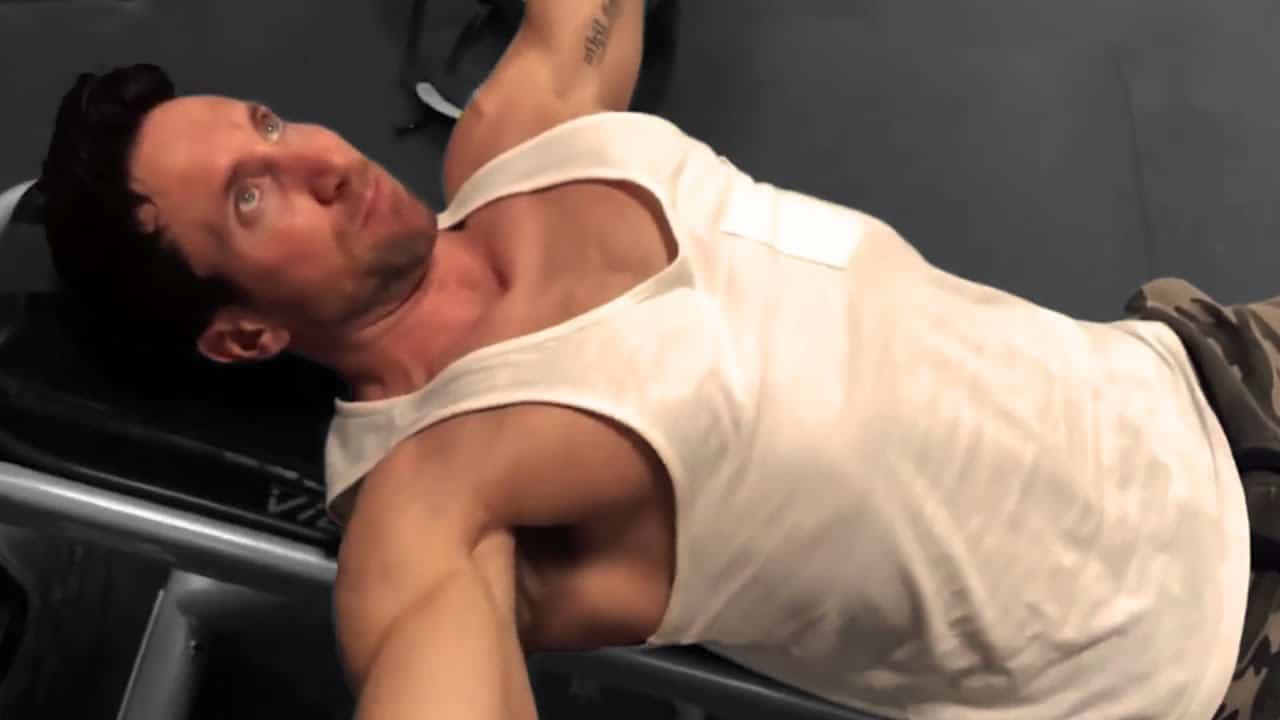
Grab the cable handles with a palms-down grip and position yourself on the bench. The start position of this exercise should have your arms at right angles and parallel to the floor. From here, press forward and down slightly to bring the handles together at about the level of your navel. Concentrate on feeling the stretch and contraction in your pecs through the entire range of motion.
Note: If you haven't tried this exercise before, you'll be amazed at how much more you feel this version of the chest press in your pecs and how much less you feel it in your front delts than when you do the traditional barbell bench press!
It is also worth pointing out here that, contrary to popular belief, it is not possible to isolate the different areas of your chest. Your muscle fibers originate and insert at the same points. That makes it scientifically impossible to isolate any part of those fibers. When you do an exercise for the chest, they all fire together. That means that you do not have to do one exercise for the upper chest and another for the lower chest. That is different from the deltoids, which IS made up of different fibers that have their own origin and insertion points!
Latissimus Dorsi
One Arm Lat Pull In
Position a bench side on to a single pulley machine and about two feet in front of it. Set the pulley to its highest setting. Grab the pulley handle and sit on the bench. Alternatively, you can do this exercise while standing. In the start position, your arms should move diagonally up from your torso at an angle of around 30 degrees.
From a fully stretched lat position, pull the handle down and in toward your hip. Make contact with your hip on each rep as you feel for full contraction through the lats.
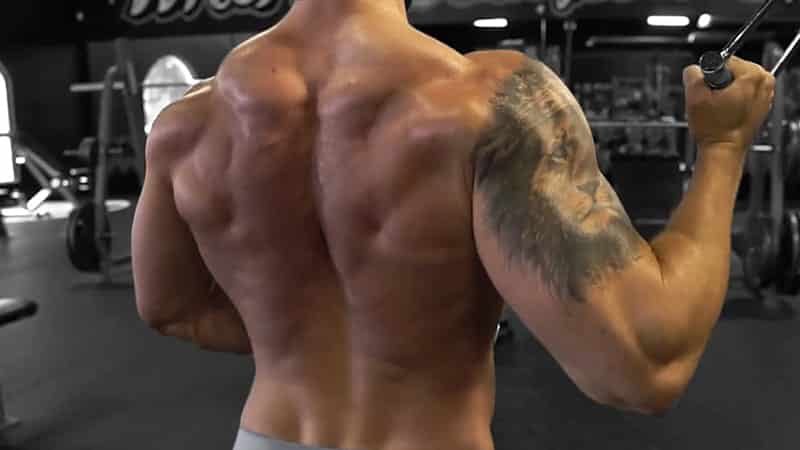
The one arm lat pull in is a unilateral exercise that allows you to work each latissimus dorsi muscle independently. Unlike lat pulldown and rowing exercises, this exercise perfectly follows the anatomical movement arc of the latissimus dorsi muscles. As a result, you will work that muscle far more effectively than anything else you have ever done for your lats.
Trapezius
Cable Shrug
Position a seat in the middle of a cable crossover machine, about three feet back from it. Set the cables at hip level. Now grab the handles in a palms down grip and sit in the seat.
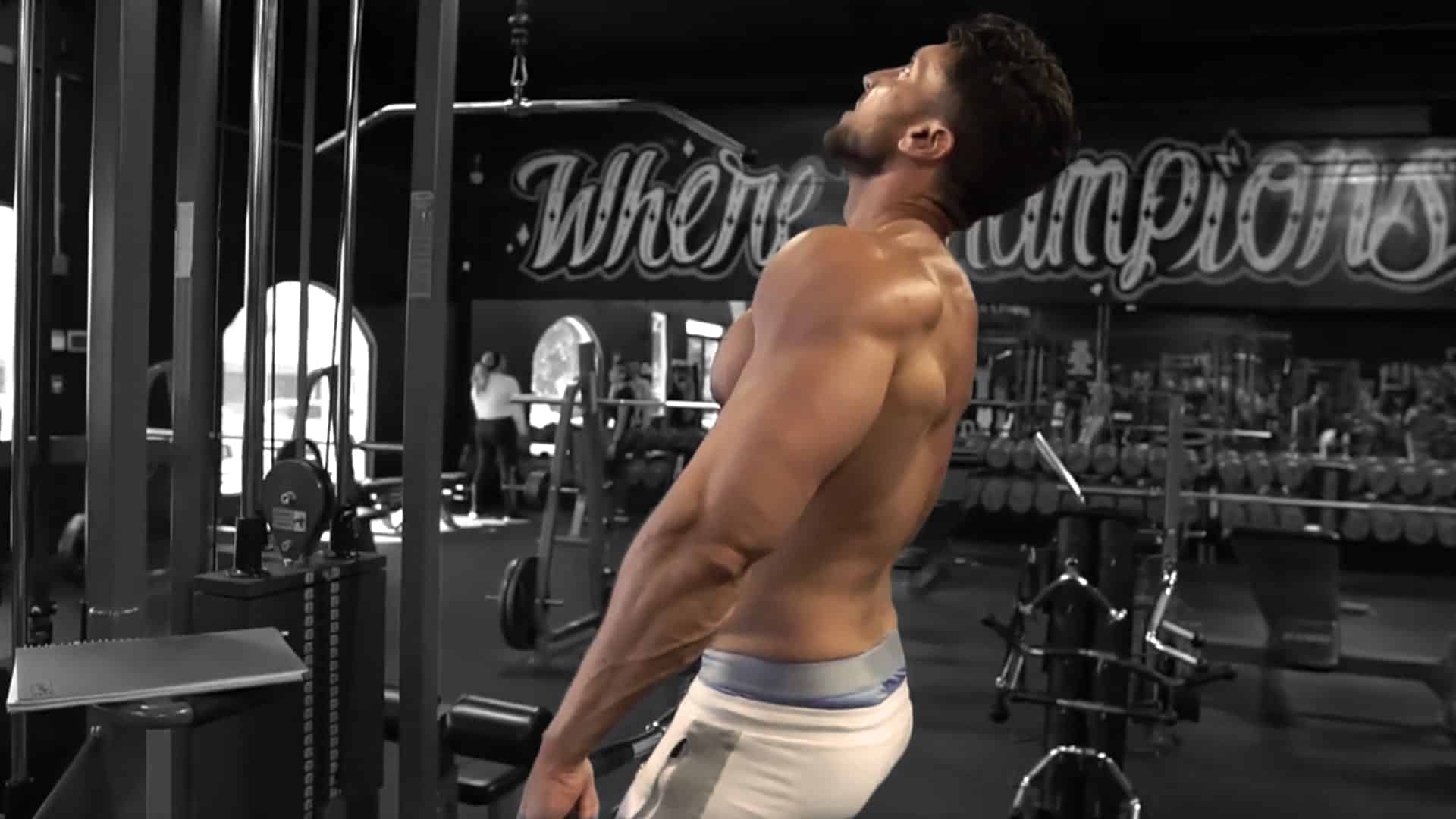
Extend your arms out at your sides (they should be at about 30 degrees from your torso). The movement involves extending your shoulder blades down and in. This will isolate and contract your trapezius muscle. There will be a little bit of elbow bending here but the majority of the movement will be a scapular cable shrug. Don't let your elbows move back beyond the level of your upper body.
Biceps
Cable Curl
Stand in front of the pulley cable pulley machine, facing away from it. The pulleys should be set at just a little wider than shoulder width apart. Grab the handles with a palms up grip.
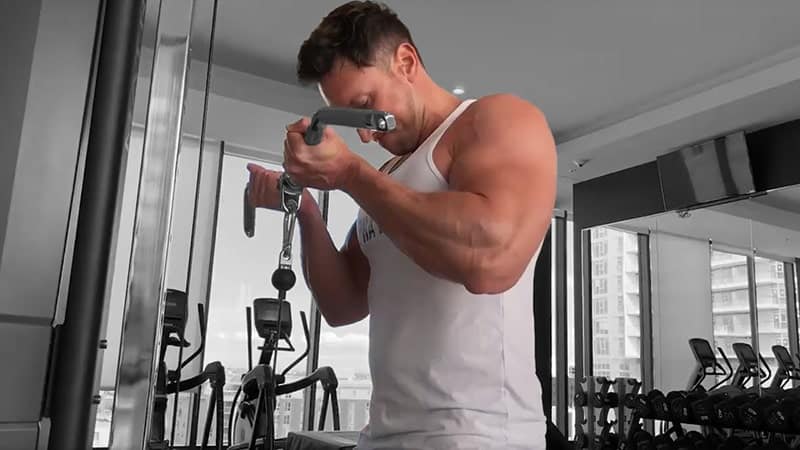
Starting with your arms fully extended, curl them up to full contraction. You should only lower the arms 80 percent of the way in order to keep the tension on the bicep at all times.
In order to target both the biceps brachii and the brachioradialis, I suggest alternating between a palms up grip to perform regular cable curls and neutral grip to perform hammer curls.
Triceps
Lying Dumbbell Triceps Extension
Set a decline bench to about 40 degrees. Now lie on the bench with a pair of dumbbells in your hands. Place your arms directly above your chest to full extension. Now, keeping your elbows in at the sides of your torso, bend the elbows to bring the dumbbells down to the sides of your head. Push through the triceps to return to the start position.
Be sure not to use momentum to get the weight back up when doing the dumbbell lying tricep extension. If you find yourself doing this then you are using too much weight. Lower the weight and concentrate on an isolated triceps movement.
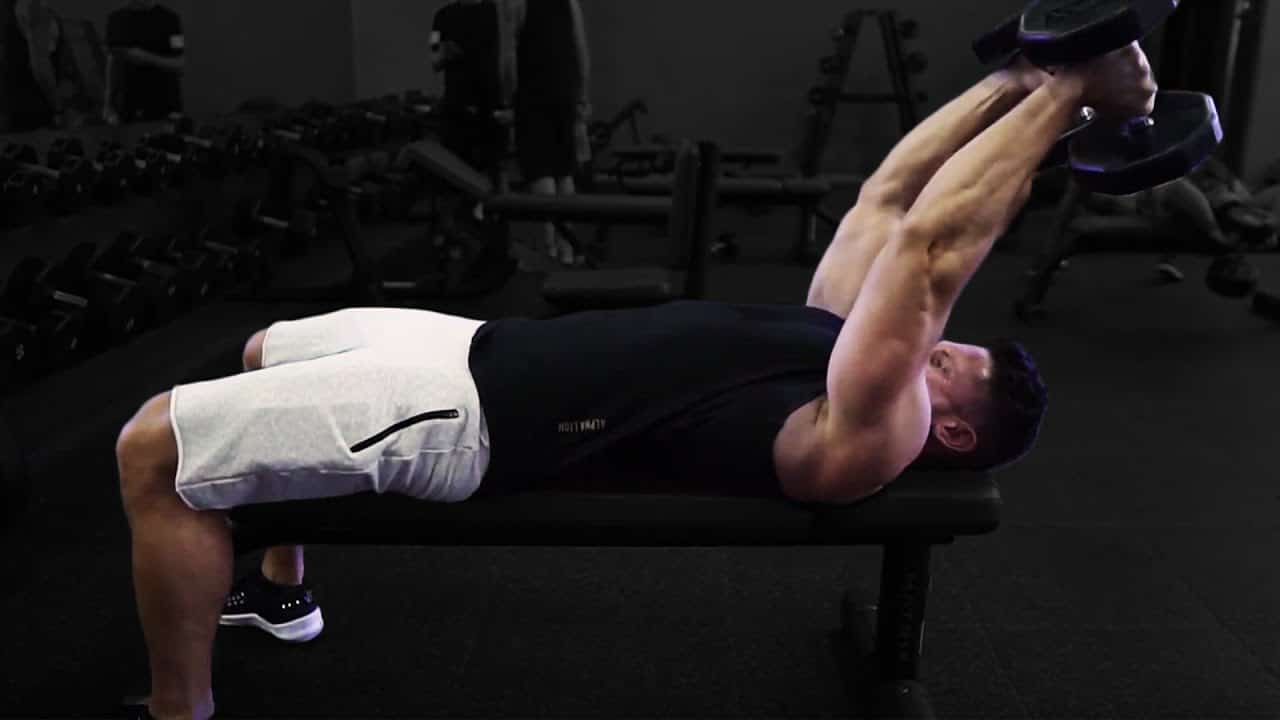
Note: The triceps is made up of three different heads. However, they all have the same insertion point but different origins. This has led many people to believe that you can isolate each of these heads with different exercises. This is a false belief. The elbow is a hinge joint that is activated by just one tendon.
As a result, the entire triceps, that is all three heads, are involved in every triceps exercise that you do. So trying to do an exercise such as overhead triceps to target the long head of your triceps is a waste of time!
Deltoids
The deltoids are unique in terms of the skeletal muscles in that they consist of three separate heads that have different origin and insertion points. That means that to work each of these heads you need to do different exercises. Here, then, are the best exercises to target each of the 3 heads of the deltoids:
Front Deltoid: Seated Anterior Deltoid Cable Press
Position a bench with a backrest two feet in front of a dual cable machine and facing away from it. The pulley should be set at slightly wider than shoulder width apart. Set the pulleys at the level of your shoulders when you are sitting on the bench. Now grab the handles with a palms up grip and assume the starting position, which sees your hands alongside your ribcage and your elbows behind your torso. From here, press forward to bring your hands together at chest level. The motion that you should do with this exercise is a scooping one from down low to mid level.
Note: If you are performing this exercise for the first time, you will feel it working your front delts like nothing that you have ever tried before. That is because it is 100 percent front delt, which makes this the ideal exercise to blast that head of the deltoids.
Side Deltoid: Cable Side Lateral Raise
Stand side on to a single pulley cable. Set the pulley at hip height. Grab the handle with your outside arm at arm’s length at your side. Now, from a straight arm position, extend your arms directly out to the side. Go up until it gets to the level of your shoulder but do not go any higher. Lower the cable to your hip and then move into your next rep. Do not allow your arm to move beyond the level of your hip.
Be sure not to allow momentum to cause you to bring the weight up. This may require lowering the resistance in order to focus on your side delts only.
Rear Deltoid: Reverse Cable Crossover
Stand in front of a crossover cable machine. Take the handles off the ends of the cables and set the pulleys at the level of your hips. Grab the handles in cross over fashion and step back by a couple of feet and in the middle of the cable crossover machine. From a straight arm position in front of the body, move from the shoulder joint to extend your arms to the side and back. Feel the squeeze in the rear delts. Return to the start position and repeat.
Quadriceps
Seated Leg Extension
Sit on a leg extension machine and adjust it so that the back is as reclined as possible. This will put your femur (upper leg bone) as parallel as possible to your torso. This will far more completely engage your quads than if you are sitting in the conventional upright position when doing this exercise.
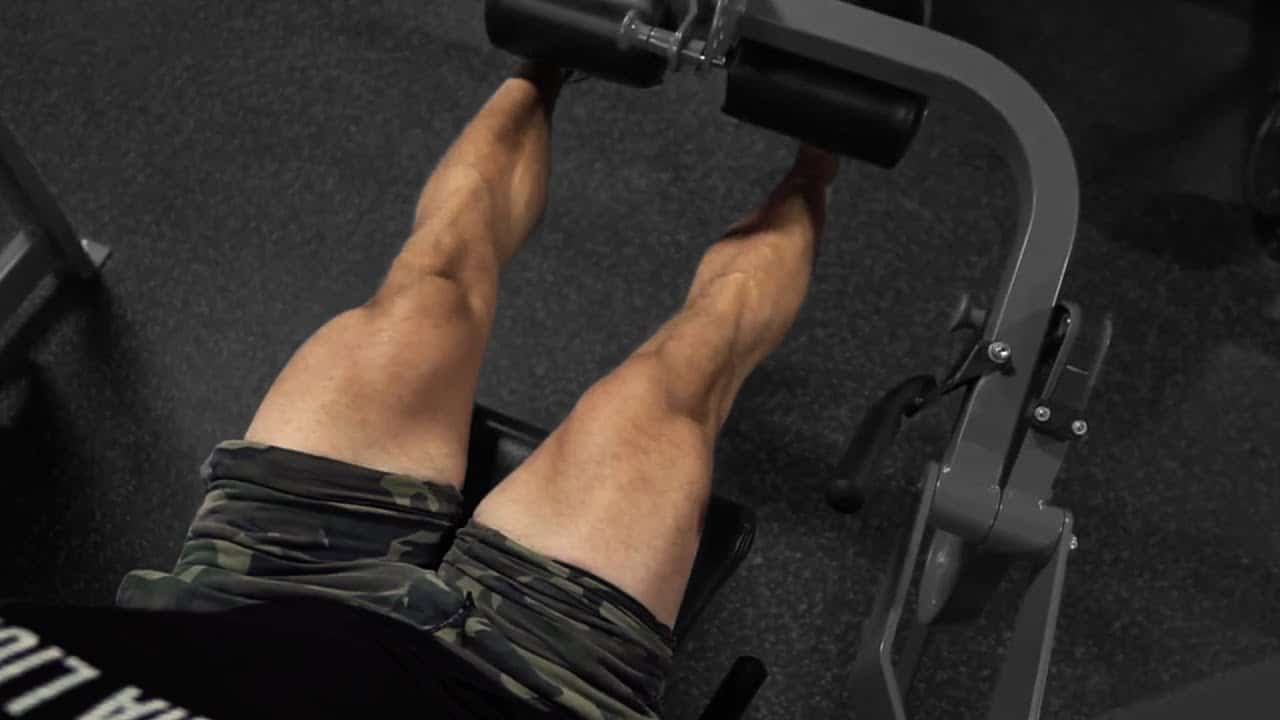
When performing the leg extension, you should move within the middle 80 percent of the range of motion. Cutting out the first and last 10 percent of the movement keeps the tension on the quadricep muscles throughout the entire movement. It also eliminates the possibility of knee problems when doing the leg extension exercise.
Hamstrings
Seated Leg curl
The seated leg curl is the ideal exercise to isolate the hamstrings. When you do this exercise, take hold of the handles to brace your torso slightly forward and lift the chest up. Do the leg curl on the seated leg curl rather than the lying leg curl because it avoids active insufficiency of the hamstrings. As with the leg extension, you should limit your range of motion to the middle 80 percent of the exercise.
Glutes
Back Lunges
Stand with your feet shoulder width apart and hands on your hips. Take a large step backward and drop your rear knee to the ground. Push through the front thigh to return to the start position. The backward version of the lunge loads the glutes far more than the forward version, which is more quad dominant.
Calves
45 Degree Leg Press Calf Raise
Sit on a 45 degree leg press machine with the balls of your feet resting on the bottom of the foot plate. Release the catches and extend your legs to full extension. Now, with just a slight bend in the knee, extend the foot as far as possible and then retract it to engage the calves. You will notice that your feet tend to slip after every five or so reps. To compensate for this, you should pause and readjust your foot positioning to allow for the maximum amount of elongation and contraction.
Performing the leg press on the 45 degree leg press machine is the best option to engage both the soleus and the gastrocnemius areas of the calf muscle.
Abdominals
Seated Cable Crunch
Position a seat with a back support about three feet in front of a single cable pulley machine, facing away from it. Set the pulley to its highest setting and put a rope handle on the end of the cable. Now sit on the seat with the rope ends in your hands and your arms outstretched above your head. Crunch forward to bring your chest down toward your knees. Return to the start position and repeat.
Forearms
Barbell Wrist Curls
Sit on the end of a bench with a barbell in your hands and your forearms resting on your thighs. Your wrists should be hanging over our knees. Now extend your wrists down as far as you can and then curl them up as high as you can.
Pillar #6: Sets and Reps
Having identified the best exercises for each body part in order to develop a lean body, the next step is to put them together into the most productive workout format. This is another area where most people become unstuck. The gym industry has fed us on the belief that it is necessary to do a wide range of exercises in order to build muscle and develop a lean body. However, that idea does not stack when you think about it logically.
We have just identified the single best exercise for every muscle that you need to work to create a muscular, lean body. On a scale of 1 to 10, these exercises are all 10s. Other exercises, because they fall down on at least one of the essential key criteria, are anything from a 9 on down to a 1. So, why would you only do a few sets of an exercise which is a 10 and then move over to an inferior one which is, let's say, a 6? Why not just stick with the 10?
The smart trainer will identify the best exercise and then do that exercise exclusively. There is no evidence, scientific, logical, or otherwise, as to why you should vary the exercises for a muscle group. After all, the muscle doesn't know what exercise you are doing. All it knows is whether or not it is being efficiently worked. So, find the exercise that works best and stick with it.
The bottom line here is that rather than doing three or four exercises for a body part, stick with the one that is the best. However, you should do more sets. You may have otherwise done four exercises for chest with 3 sets per exercise for a total of 12 sets for the body part. Now you will do 12 sets but just on the one exercise. Those sets should cover a wide range of reps in order to fully develop the muscle fibers. There is now ample research to show that both high and low rep ranges are necessary for full development.
Here is what your rep scheme should look like:
This rep scheme will have your target muscle group aching as every single muscle fiber gets fully activated. It will also provide an awesome pump. As you lower the reps with each set, increase the weight slightly.
In terms of how to divide your workout, I suggest a three day split as follows:
Perform each workout just once per week. When you try it you will find that you will need a full seven days to fully recover from each session. I suggest doing the workouts on Monday, Wednesday, and Friday, with your burst training workouts on Tuesday, Thursday and Saturday.
Wrap Up
The six pillars to creating a lean body that have been presented in this mega article will provide the foundation for your lean body transformation over the next few months and on into the future. If you are able to embrace each of these fundamentals, you will be in a position to maximize your body's natural lean body building potential while avoiding the frustrations and pitfalls that prevent so many people from reaching their goals. Be consistent and keep pushing to be better than you were yesterday and you WILL end up with the lean body that you're striving for.
